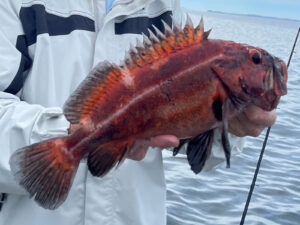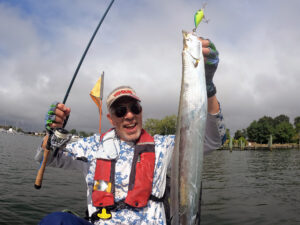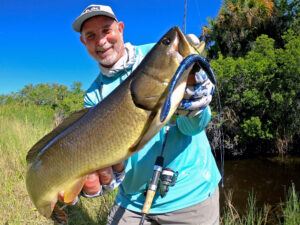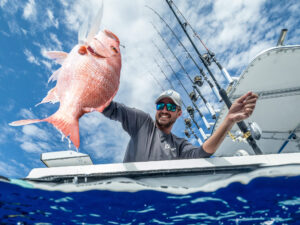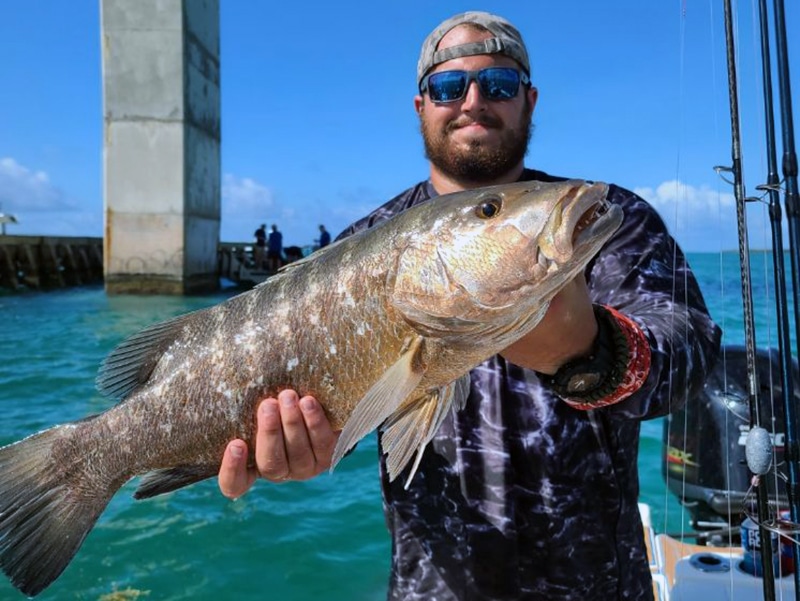
Admittedly, Capt. Brandon Storin first considered it an annoyance, but he soon realized that he had dialed in a cool Florida Keys fishery that goes largely unnoticed.
“During the time when we catch bridge tarpon in spring, sometimes we’d run into some bycatch of cubera snapper,” Storin said. “I think they’re chummed up because of all the people tarpon fishing; there’s a lot of scent in the water. It’s mostly just the scent of the baits. Some people chum for tarpon (with cut bait), but I don’t because it brings too many unwanted species like nurse sharks.”
Considered the most brutal of the snapper clan, the hard-fighting cubera is a straight-up string stretcher. As Storin notes, these aren’t the giant spawners that anglers catch at night over deep-water reefs with legal-size lobster as bait, but the 15- to 20-pounders common at Keys bridges will still give you all the fight you want.
How to Target Cubera Snapper in the Florida Keys
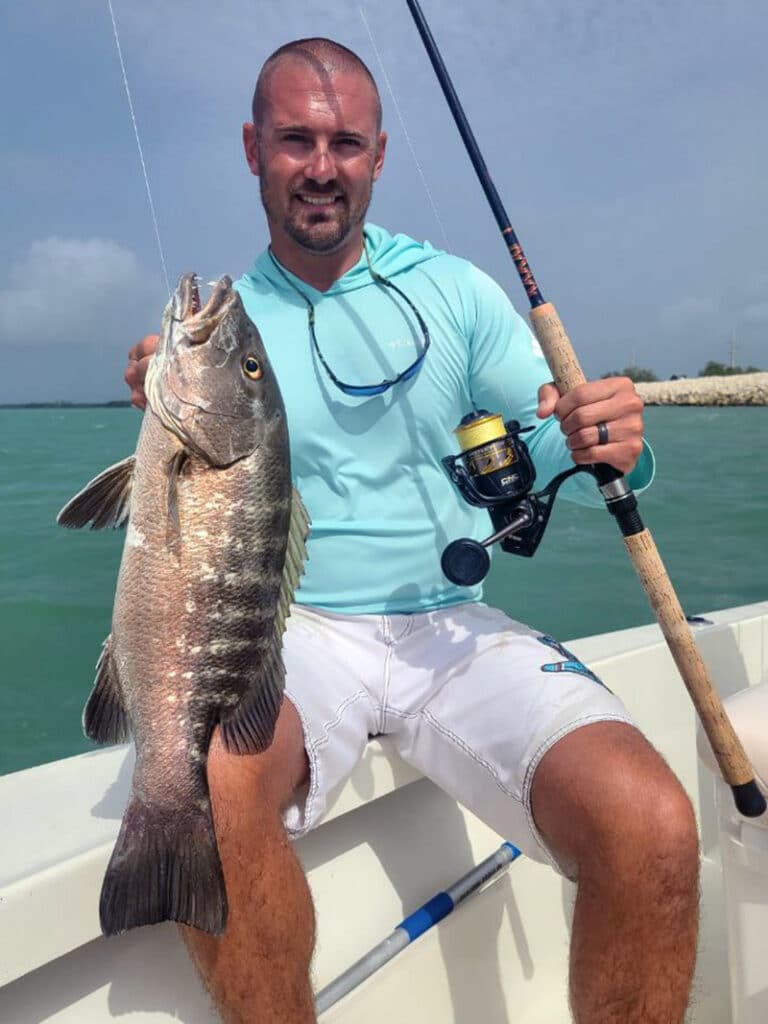
If you’re game to actually target these cuberas near the bridges, Storin offers a few tips.
When: April-May is prime time, but the small to midsize cuberas hang around the bridges throughout much of the year. Colder weather will slow the bite when big winds muddy the water; during these conditions don’t waste your time.
Storin said he’s caught cuberas on incoming and outgoing water, but the fish seem most aggressive at the change of the tide. The fish can feed much easier during slower water compared to when the tide is screaming — ideal conditions are when that heavy bridge current slacks up and starts moving again.
“They’re definitely more nocturnal, so the night action is great, but also, the first and last hour of the day can be good,” Storin said. “If you’re fishing for them during the day, I’d bet that you wouldn’t run into many of them during the full moon.”
Where: Storin does most of his tarpon guiding around Islamorada’s Channel 2 and Channel 5 bridges, and the Long Key area. Most of Florida Keys’ major bridges will attract cuberas.
How: Based on his tarpon fishing thefts, Storin can attest that cubera snapper like a big deboned mullet on a fish-finder rig or pinfish drifted near pilings. If he’s targeting cubera specifically, Storin would fish a smaller deboned mullet or a live pinfish on the bottom.
“I’d definitely fish the baits close to the pilings and close to the bottom,” Storin said. “You’ll want to make an upcurrent presentation so the scent will come down to where the cuberas are.”
Tackle: A 7-foot medium-heavy spinning rod with a 6500 series reel carrying 65-pound braid will handle most bridge cuberas, along with the abundant mutton snapper. Storin uses 60-pound fluorocarbon leader for tarpon, but he’ll drop to 40 for the wary snapper.
Cubers Snapper Fishing Tips
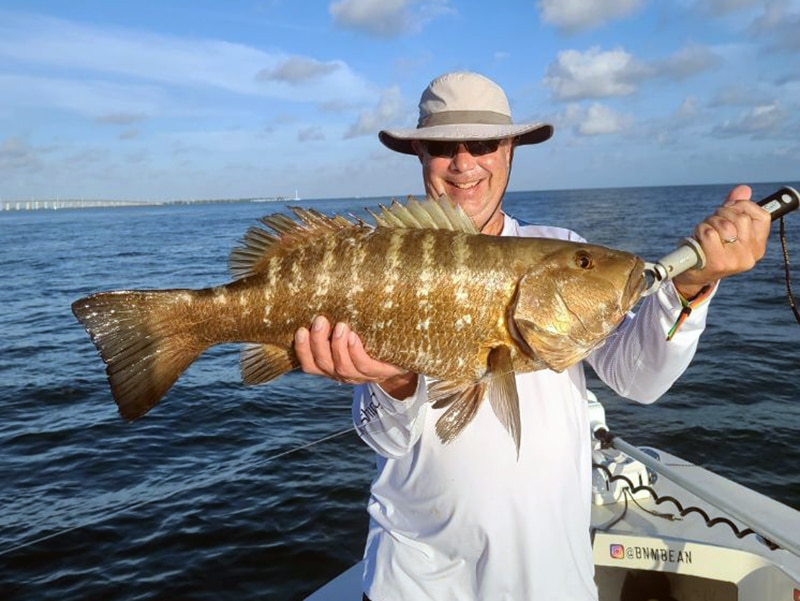
Land-Based: For anglers perched on Keys fishing platforms like the popular pedestrian-friendly Channel 2 and Channel 5 structures, a chum bag and a jumbo live shrimp can make big things happen.
What to Expect: Storin says bait size will determine how long an angler should wait to set the hook. A hefty meal might require a little chomping, but these fish are super aggressive, so they’ll snatch up a smaller offering and try to yank the rod out of your hand.
“If you feel them picking it up and turning the bait in their mouth, give them a few seconds,” Storin said, “but once they get a good bite, they’ll run hard. If you feel them batting at it, open the bail open to let them get it. I use the Owner Mutu circle hooks, so once they get the bait, I just let them come tight. Then you just have to (tighten) the drag and handle that run.”

